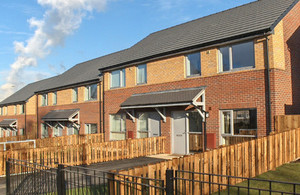Location
In terms of geography and the built environment, the term ‘location’ is used to refer to a point or area on the Earth’s surface. It is commonly used to imply more geometrical certainty than ‘place’ which tends to be used to indicate somewhere with a boundary that can be ambiguous. It also differs to ‘space’, which is more abstract and tends to be used to refer to a location without human value or meaning having been attached to it.
Location can be defined in a number of ways:
- Relative location: Described as displaced from another point, e.g. ’10 miles south of [place].’
- Locality: An area, usually highly populated, that has an ambiguous boundary, e.g. Greater London.
- Absolute location: Uses a Cartesian coordinate grid (e.g. the World Geodetic System) to plot latitudes and longitudes.
In terms of property development and real estate, the common mantra is ‘location, location, location’, which is used to emphasise the importance and centrality of location. This mantra refers to the fact that, typically, similar buildings (e.g. houses) can increase or decrease in value depending on their location, and that while structures can be improved, renovated, decorated, and so on, or its use class changed, its location cannot be changed.
However, in certain circumstances a structure can be moved from one place to another, in a process known as relocation. This can be done either by disassembling the structure and reassembling it in a new position, or by transporting it in its entirety. This is, though, a complex process and is often prohibitively expensive. For more information, see Structure relocation.
Some of the factors that can characterise a ‘prime location’ include:
- Good transport infrastructure links.
- Good quality schools, hospitals and other public services in the vicinity.
- Somewhere close to recreation sites and areas of natural beauty, green spaces, and so on.
- Properties that have good views.
- Close proximity to cultural, entertainment, shopping and leisure hubs.
- Economically-stable areas (those where properties have held their value over time).
- Low levels of crime, pollution and noise.
Some of the factors that can characterise a ‘bad location’ include:
- Close proximity to commercial, industrial or agricultural areas.
- Close proximity to railway tracks, busy roads or flight paths.
- High levels of crime, pollution and noise.
- Close proximity to an 'eyesore' such as a brownfield site.
- Noise or other pollution.
- Lack of natural light, ventilation, etc.
- Economically depressed or volatile areas.
- Areas with poor public services, transport links, job opportunities, and so on.
A location plan is a supporting document that may be required by a planning authority as part of a planning application. A location plan provides an illustration of a development in its surrounding context. This enables the planning authority to properly identify the land to which the application refers, and is typically based on an up-to-date Ordnance Survey (or similar) map.
[edit] Related articles on Designing Buildings Wiki
- Built environment.
- Compact sustainable city.
- Genius loci.
- Gentrification.
- Global positioning systems.
- Landscape urbanism.
- Location plan.
- Masterplanning.
- Neighbourhood planning.
- Nimbyism.
- Place.
- Property blight.
- Psychogeography.
- Public space.
- Region.
- Setting.
- Society.
- Space.
- Structure relocation.
- Town planning.
- Types of land.
- Urban decay.
- Urban design.
- View.
- Zeitgeist.
Featured articles and news
Wellbeing in Buildings TG 10/2025
BSRIA topic guide updates.
With brief background and WELL v2™.
From studies, to books to a new project, with founder Emma Walshaw.
Types of drawings for building design
Still one of the most popular articles the A-Z of drawings.
Who, or What Does the Building Safety Act Apply To?
From compliance to competence in brief.
The remarkable story of a Highland architect.
Commissioning Responsibilities Framework BG 88/2025
BSRIA guidance on establishing clear roles and responsibilities for commissioning tasks.
An architectural movement to love or hate.
Don’t take British stone for granted
It won’t survive on supplying the heritage sector alone.
The Constructing Excellence Value Toolkit
Driving value-based decision making in construction.
Meet CIOB event in Northern Ireland
Inspiring the next generation of construction talent.
Reasons for using MVHR systems
6 reasons for a whole-house approach to ventilation.
Supplementary Planning Documents, a reminder
As used by the City of London to introduce a Retrofit first policy.
The what, how, why and when of deposit return schemes
Circular economy steps for plastic bottles and cans in England and Northern Ireland draws.
Join forces and share Building Safety knowledge in 2025
Why and how to contribute to the Building Safety Wiki.
Reporting on Payment Practices and Performance Regs
Approved amendment coming into effect 1 March 2025.























